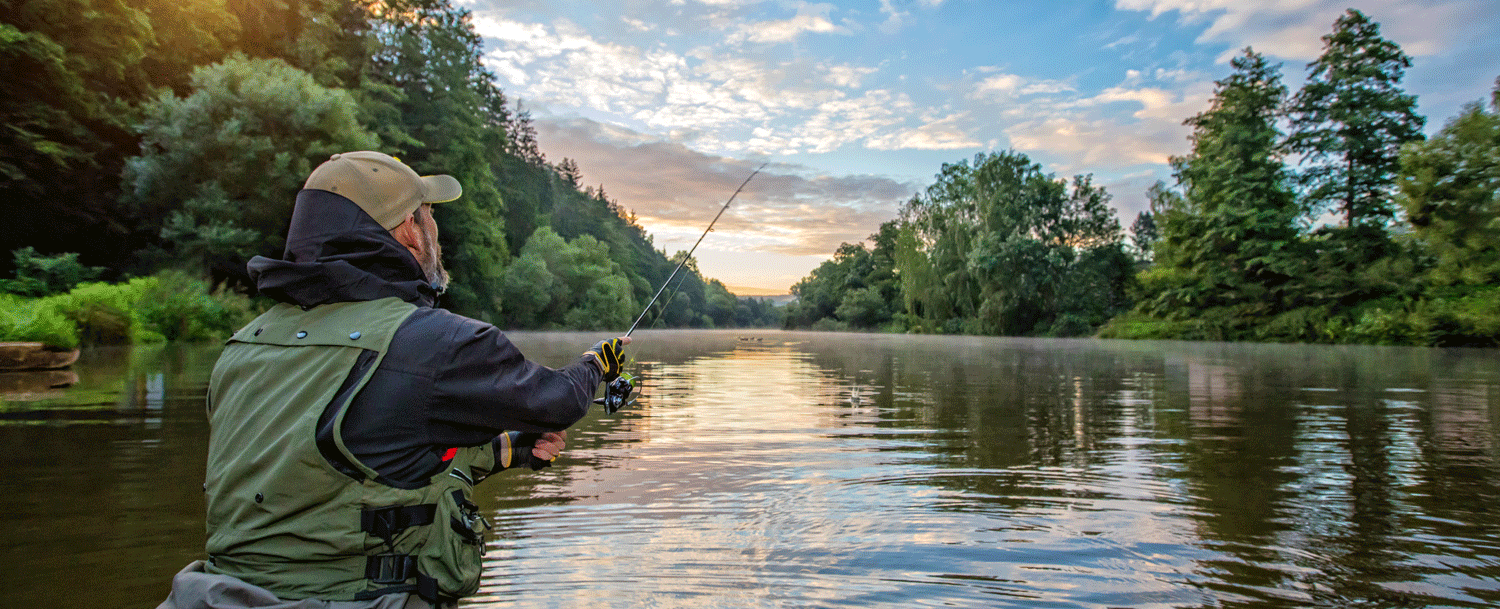River fishing offers diverse and exciting opportunities for anglers. Rivers provide habitat for various fish species and present unique challenges and rewards. Whether you’re targeting trout, bass, or other species, understanding river dynamics and employing effective strategies can enhance your fishing success.
Understanding River Structure
Rivers have distinct structures and features that influence fish behavior and distribution. Key areas to target include riffles, runs, pools, and eddies. Riffles are shallow, fast-moving sections with plenty of oxygen and food, attracting smaller fish and feeding larger predators. Runs are deeper and slower, providing comfortable habitats for fish. Pools are the deepest and slowest sections, often holding the largest fish. Eddies, formed behind obstructions, create calm areas with abundant food and cover.
Reading Water Currents
Currents play a significant role in river fishing. Fish often position themselves in current seams, where fast and slow currents meet, to conserve energy and ambush prey. Look for breaks in the current, such as behind rocks, logs, and bends, where fish can rest and feed. Understanding how fish use currents to their advantage helps you choose the best spots and presentations.
Choosing the Right Gear
The gear you use for river fishing depends on the target species and conditions. Lightweight to medium-heavy rods and reels are versatile choices. Use monofilament, fluorocarbon, or braided lines based on the species and water clarity. Lure and bait selection should match the local forage and conditions. Common river fishing lures include spinners, crankbaits, soft plastics, and flies. Live bait, such as worms, minnows, and crayfish, is also effective.

Techniques for River Fishing
Various techniques can be successful in rivers, depending on the target species and conditions. Drift fishing involves allowing your bait or lure to drift naturally with the current, mimicking the movement of prey. Casting upstream and retrieving downstream is another effective method, keeping your presentation in the strike zone longer. Fly fishing is particularly popular in rivers, offering precise presentations and natural drifts.
Timing and Seasonal Considerations
Timing is crucial for river fishing. Fish behavior and feeding patterns change with the seasons and water conditions. Spring and fall are generally the best times for river fishing, as fish are more active and feeding aggressively. During summer, focus on early morning and late evening when fish are more likely to be feeding. In winter, fish are less active and may be found in deeper, slower-moving pools.
Safety and Conservation
Safety is paramount when fishing in rivers. Be aware of changing water levels and currents, especially after rain or snowmelt. Wear a life jacket when wading or fishing from a boat, and use wading staff for stability. Practice catch and release to conserve fish populations and maintain the health of the river ecosystem. Handle fish gently and minimize their time out of the water.
Exploring New River Spots
Rivers offer endless exploration opportunities. Research local rivers and their fish species, and seek advice from local anglers and bait shops. Exploring new spots can lead to discovering productive fishing areas and enhancing your overall fishing experience. Keep a fishing journal to record your observations and successes, helping you refine your strategies over time.
By understanding river structure, reading currents, and employing effective techniques, you can enjoy a successful and rewarding river fishing experience. Adapt to the conditions, stay safe, and practice conservation to make the most of your time on the water.
Image: innatcedarfalls





